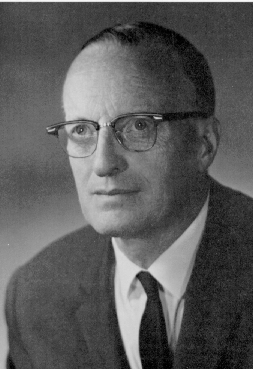George Craig Laurence (1905-1987) was a Canadian nuclear physicist.
Laurence was born in Charlottetown, Prince Edward Island and attended Dalhouise University in Nova Scotia, where he studied physics. Laurence later moved to England and studied physics at Cambridge University’s Cavendish Laboratory under Ernest Rutherford.
In 1930, Laurence was appointed as Radium and X-ray physicist to the Canadian National Research Council. There, he helped develop medical and industrial radiology. When news that the uranium atom had been split by Fritz Strassemann and Otto Hahn reached the United States in 1939, Laurence attempted to build a graphite-uranium nuclear reactor in Ottawa by himself.
In 1942, Laurence joined the Anglo-French nuclear research team at the Montreal Laboratory, where he was responsible for recruiting Canadian scientists to work on the project. The team eventually moved to a new laboratory in Chalk River, Ontario and built the Zero Energy Experimental Pile (ZEEP), the first nuclear reactor built outside of the United States.
After the war, Laurence joined the Canadian delegation to the United Nations Atomic Energy Commission and advised on the international control of atomic energy between 1946 and 1947. He then returned to Montreal Laboratory and continued his research on nuclear reactor technology from 1950 until 1961.





